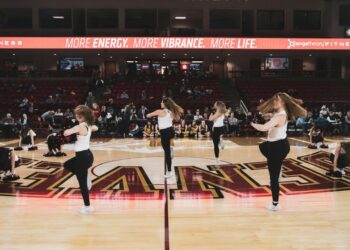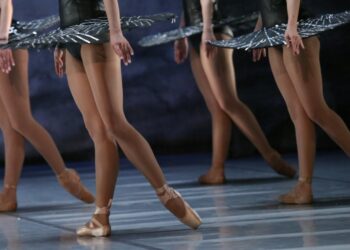Recovery is the daily routine that helps you stay on top of your game as a dancer. It’s not just about what you do after you’ve received a nasty injury. By focusing on stretching and getting good, quality sleep, you can transform your body into a finely-tuned machine that can take plenty of hard practice daily and not break down.
The Recovery Window – Timing Does Make a Difference
Your muscles are at their most receptive to recovery work right after you’ve finished dancing. That’s because when your blood is still pumping and your muscles are warm and ready to go, then they are more receptive. Use this 30 minute window to do some gentle stretching and to get hydrated. Try to get a drink in before you let your body cool down completely.
Stretching for Recovery – Not for a Warm-up
When you’re doing your stretches after class, do not treat your body like your warm-up routine. This is where most people get it wrong in my opinion. Hold each stretch for a good 30 to 60 seconds. Focus, specifically, on the muscle groups that you worked on during class. If you’ve had a particularly tough ballet day, then make sure to stretch those calf muscles, also include the hip flexors, and your turnout muscles. If it was a contemporary or jazz day, then go for the hamstrings, your quads, and check your spine mobility.
Try to incorporate these 3 recovery stretches into your daily routine:
1) The Supine Figure 4: Really nice way to release tension in the hips and give your spine a bit of a break.
2) Wall straddle: Let gravity do the work for you. This is a great way to get a deep stretch without putting too much strain on your muscles.
3) Foam Roller IT band release: Do this to keep your knee healthy and to prevent any nasty injuries down the line.
When your muscles are feeling knackered, don’t bother trying to do any aggressive stretching because that’s just, likely, going to make things worse. Instead, try doing some gentle walking or easy yoga to keep the blood flowing without putting too much strain on your body at this point.
Sleep: The Secret to Top Performance
Professional dancers probably need at least 8 to 9 hours of sleep to get the kind of recovery their body really needs. This is definitely more than the average person. When you’re asleep, your body gets to do all of its hard recovery work. It releases growth hormone (GH), repairing any damage to your muscles and even consolidating all that hard work that you did when you broke some of your muscle fibers down during class.
Create your own sleep sanctuary by:
1) Keep the room nice and cool – around 65 to 68 degrees is ideal for muscle recovery.
2) Use blackout curtains to help your body produce melatonin while keeping the room dark – that’s the stuff that will help you fall asleep.
3) Get your phone out of your bedroom – your eyes absorbing blue light from those screens is a major disruptor of all that recovery work.
The 90-Minute Rule
Make sure to give yourself at least 90 minutes to wind down after a big practice session. Use this time to get some gentle stretching in, use a foam roller, or you can do some meditation to get your body into its recovery mode.
You know what’s also a good idea during this time? Taking a warm bath with some Epsom salts in it. The magnesium in the salts will help to take the tension out of your muscles and the temperature drop afterwards will have you feeling sleepy in no time.
Also, Recovery Nutrition Before Bed
Lastly, make sure that you’re getting the right nutrition to help your body recover overnight. Have a small snack 30 minutes before bed that’s packed with protein. This snack can be something like a bit of Greek yoghurt with some honey on top or a handful of almonds. Sometimes, I will do a spoonful of peanut butter to keep my hunger at bay. Find what works for you and give your muscles the fuel that they need to repair and rebuild without ever disrupting your sleep.


















